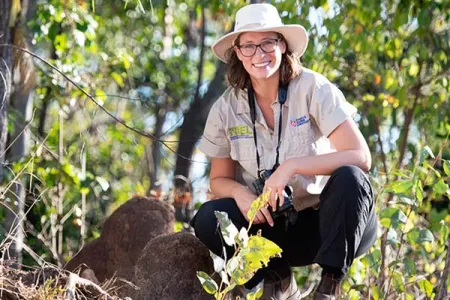North’s possum numbers in massive decline
Love them or hate them, possums are a quintessential part of the Australian backyard. But new research has found their numbers are in sharp decline.
A team of researchers from Charles Darwin University has found the distribution of common brushtail possums across Northern Australia has declined by 72% over the past century, supporting evidence of accelerating decline in recent decades.
Ironically, possums seem to be better off in the urban environment than they are in the savannas and rangelands.
Lead researcher, Dr Alyson Stobo-Wilson puts this down to two interrelated factors.
“Bushfires and feral cats seem to be the big drivers behind this decline. Frequent, hot fires are reducing shrub density which makes the possums more susceptible to predation by feral cats,” Dr Stobo-Wilson said.
“Feral cats like to hunt in more open areas and changed fire regimes reduce densely vegetated areas, creating a good hunting ground for feral cats and at the same time, removing shrubby areas which are important for possums.
“It’s a lose-lose scenario for the possum. Fire not only potentially destroys important food sources and refuges, but the process also leaves them more exposed to one of the most pervasive introduced predators in the world.”
The study, published in the Biodiversity and Conservation journal, also found the distribution of the savanna glider has also declined by 35% over the same area. This is concerning news considering the glider has only recently been identified as an undescribed species and highlights the need for targeted monitoring of the species.
While there is evidence that feral cats consume both these species of mammals, possums may make for an easier prey item.
The lesser decline of the savanna gliders is put down in part by the research team to the species spending less time on the ground – the territory of the feral cat.
“The glider has the ability to glide between tress rather than travelling across the ground so when looking for food, it is less likely to spend time on the ground compared to the possum. So it’s less exposed to predation by feral cats,” Dr Stobo-Wilson said.
The study team from the Research Institute for the Environment and Livelihoods, which also includes Professor Sue Carthew, Associate Professor Brett Murphy and Dr Teigan Cremona suggests that a greater understanding of the relationship between shrubby areas and possums was needed to properly understand the drivers of the decline.
“What we also need to look at is the best way to manage the environment so that we can slow the decline,” Professor Carthew said.
Dr Stobo-Wilson said feral cats are hard to control but improvements can be made to fire management.
“Fire management that recognises the importance of shrubs for our small mammals could help protect the critical resources these species need,” she said.
“Possum numbers are declining so quickly the species might be lost by the time we have successfully controlled feral cats, thus we need an integrated management approach.
“It’s hard to imagine the possum population is under so much threat when we see and hear them in our gardens, but the fact is, in the savannas of Northern Australia, their numbers are declining alarmingly,” Dr Stobo-Wilson said.
